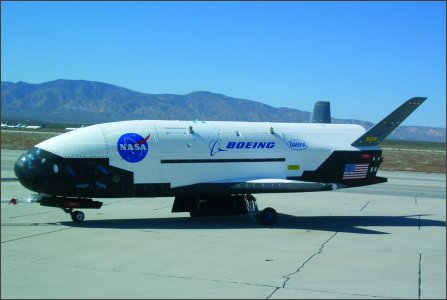A team from Scaled Composites, Boeing and the US Defense Advanced Research Projects Agency (DARPA) was expected to attempt a drop test of the X-37 approach and landing test vehicle (ALTV) reusable spaceplane over the Edwards AFB test range in California around 1 April.
The X-37 technology demonstrator, which was transferred from NASA to DARPA in September 2004, was originally part of a planned series of reusable space plane demonstrators known as Future X, which was aimed at developing technology for a Space Shuttle replacement.
|
| The X-37 has survived repeated funding cuts since its inception as part of the Future X programme |
The USAF withdrew funding from the X-37 in 2001 and the rejigged programme re-emerged in 2002 when Boeing won a $301 million contract for two vehicles. The first of these was designed to perform a series of drop tests within the atmosphere, while the second was to perform tests as an orbit and re-entry vehicle in 2006.
Funding cuts then forced NASA to hand over the project to DARPA. Scaled Composites won a contract to handle the atmospheric flight testing of the vastly scaled-back X-37 effort, and carried out the first captive-carry flight tests from its Mojave base, California in July 2005 using the White Knight aircraft, developed as the mothership for SpaceShipOne.
Redubbed the ALTV, the focus of the X-37 effort has since been redirected to proving the autonomous approach and landing capability of the spaceplane, a 120% scale model of the Air Force Research Laboratory’s X-40 Space Maneuver Vehicle: a small, powered space vehicle technology demonstrator that was successfully drop-tested by a Sikorsky UH-60 helicopter over Edwards AFB in 1998. DARPA’s aim is to seed development of commercial and military reusable space vehicles.
GUY NORRIS / LOS ANGELES
Source: Flight International

















